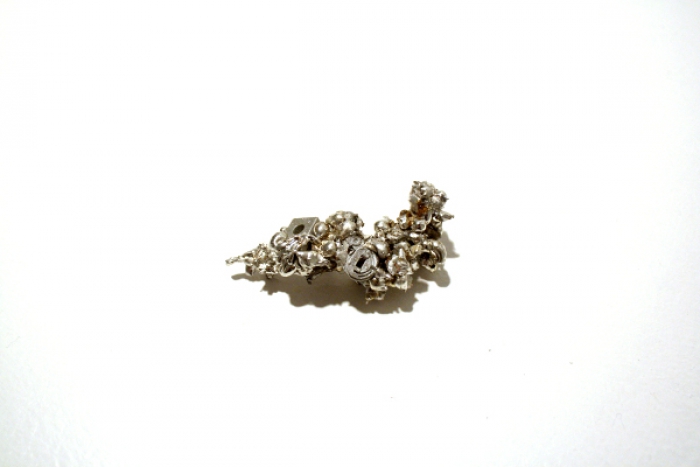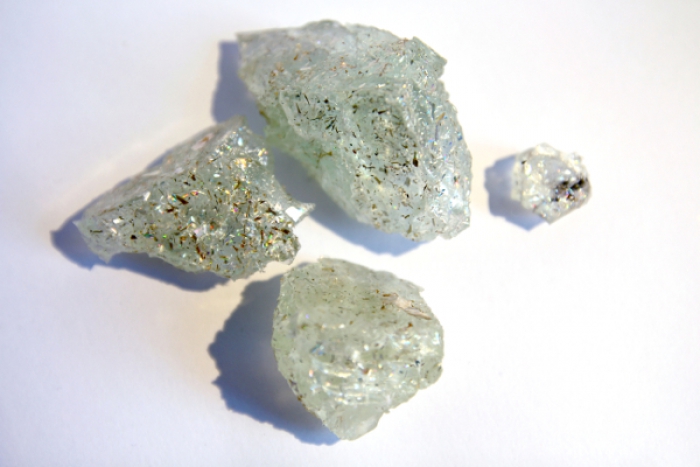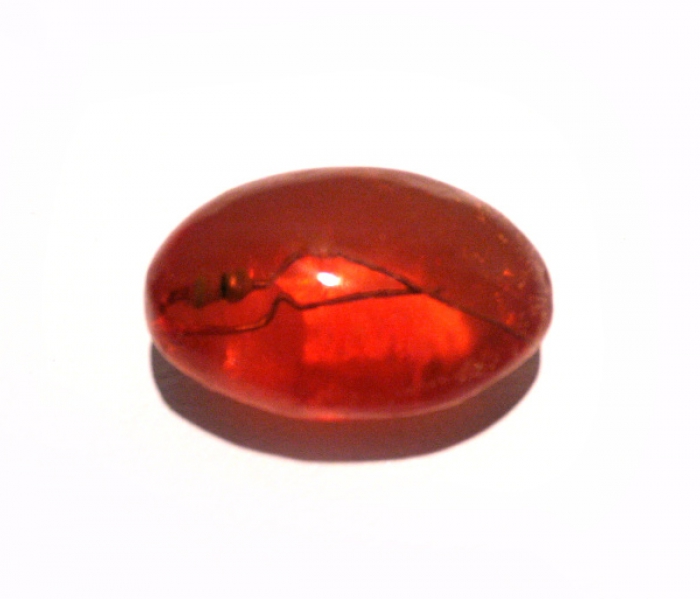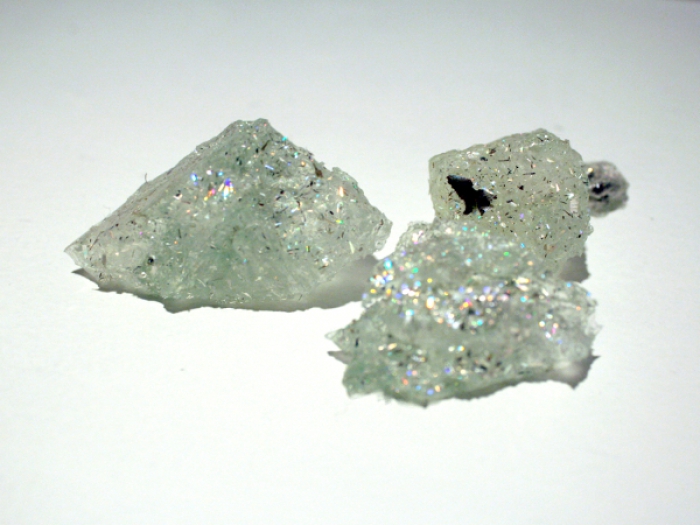Project Description: Molten Media
Project Description: Molten Media
Focusing upon the material aspects of data storage and transmission devices, Molten Media examines the flux of media and matter through the interconnection between velocity and density. This research applies a deep-time perspective to a rapid-cycling throwaway media culture, projecting an alternate timescale for its material existence. Will the future be as burdened with tech garbage from this era as the 20th century was by the atmospheric pollution of the industrial revolution? Approaching these questions by way of media philosophy, physics, and art, Molten Media develops connections not only between the durational aspects of media technology, but also questions the duration of their cultural emergence.
Suspended in flux between fixed and fluid, the nature of media and matter is flow. Duration in this sense becomes a double-articulation between durée(length/velocity) and dureté(hardness/endurance), extending beyond the play-time of a given media-object, to its material endurance through time. The twofold nature of substances, concrete, yet volatile, is the basis of data-storage devices: to fix in place for later streaming. This enables them a similarly two-fold bounded infinity: infinite iterability held within a finite medium, taking place in multiple locations while not precisely residing in any. Everything flows, nothing remains the same. And so can be said as much for media and matter, both existing somewhere between solid/liquid/gas, stable and flowing. Streaming entails its own temporalit(y/ies), those of the recording, playing the data, and its reiteration.
Il faut donc dire qu'un corps a un degré de dureté aussi bien qu'un degré de fluidité, ou qu'il est essentiellement élastique, la force élastique des corps étant l'expression de la force compressive active qui s'exerce sur la matière. A une certaine vitesse du bateau, l'onde devient aussi dure qu'un mur de marbre.
Thus it must be stated that a body has a degree of hardness as well as a degree of fluidity, or that it is essentially elastic, the elastic force of bodies being the expression of the active compressive force exerted on matter. When a boat reaches a certain speed a wave becomes as hard as a wall of marble.
--Gilles Deleuze
If a liquid may take on the properties of a solid significant velocity, displaying such a degree of resistance at impact as to be equivalent in impermeability to stone, conversely, may one then move at such a rate of slowness as to pass through marble like water? In fact, this encounter with slowly passing through marble can be seen in the front steps of cathedrals, worn down from so many centuries of passages over the threshold that it droops as if made from gelatine, or in the carving of gorges by rivers. In the interaction of solid and fluid states, matter reveals its spectral qualities, both in the sense of rendering the concrete phantasmic as well as being of a spectrum. Diamond and graphite, for instance, are two different structural configurations of the same element (carbon), with markedly different properties.
Transmutable between solid, liquid, gas, with their consequent levels of density and energy, a correlation may be drawn between matter and the electromagnetic spectrum. The forces at work here govern the relative permeability or impermeability of a substance, and the action of waves. With the increase or decrease in energy, speed, heat, there is an associated volatility in the movement of waves of matter, light, sound. Leibniz, in his studies of the interconnection between the material and immaterial, proposed three fundamental notions: the fluidity of matter, elasticity of bodies, and reemergence as a mechanism. This supports the apparent correspondence between coherence, characteristic of wave-forms in a theoretically stable state of interference with one another, and its correlate, cohesion, of the internal friction which holds a substance together. These forces determine the density of a substance, how closely together like- molecules are gathered together, and in what arrangement, those slower-moving and stable-structured being on the end of the more solid/dense, and those with more energy, velocity, and the habit of exchanging electrons on the gaseous side of the spectrum.
Speed is not a phenomenon. It is a relation between phenomena. It is relativity itself.
--Paul Virilio
Creating objects which appear at once in and out of time, constructed of melted-down, chopped up, and recomposed media materials, let us suppose an alternate timescale for the media apparatus. Of particular interest are the recently deceased, those recently outdated, or verging on obsolescence, yet familiar, approachable, the closer, the more perverse, drawing upon the culture of disdain expressed toward the by-products of mass-media and the misplaced belief in the association between technology and future. The expectation for technology to provide solutions for the future posits a fictive point of origin in the future, curiously coming into being from a postulated “to come” and culminating its trajectory in the wastebins and dumpsters of the present/past. The sentiment toward these outgrown forms of media is an embedded hatred of the present, inorder to drive the machine which produces the future. It recalls something of Caliban seeing his face in the looking-glass, a repulsion from one’s own dependency upon ever-mutating forms. To perceive the dinosaurian features of media technology reveals the fact that we are not so distanced from the deep past as one would believe, certain forms having persisted with minimal change over extended periods of time, such as writing on paper. The dipping in and out of temporalities could be as much identified with the present as the present itself. Though discarded forms of media technology cease to amaze, they remain a pertinent aspect of the atmosphere in which we exist, having not only formed the genealogy of those which continue in circulation, but also recall the spectrum mentioned before.
Notes & Reference Texts
"Pitch Drop." Wikipedia. Wikimedia Foundation, 11 May 2013. Web. 09 Nov. 2013. .
"Regions of the Electromagnetic Spectrum." Wavelength, Frequency, and Energy. N.p., n.d. Web. 09 Nov. 2013. .
"Densities of Common Substances." Table of Densities. N.p., n.d. Web. 09 Nov. 2013. .
Deleuze, Gilles. Le Pli: Leibniz et le Baroque, (Paris: Les Éditions de Minuit, 1988). 8.
“The twofold origin of solid bodies: first, that they cooled after being melted by fire; second, that they hardened again after being dissolved by water.”
From Leibniz, Gottfried Wilhelm. Protogaea. Trans. & Ed. Claudine Cohen and Andre Wakefield. Chicago: University of Chicago, 2008. (11).
Heraclitus, though this attribution is disputed. "Heraclitus." - Wikiquote. N.p., n.d. Web. 06 Nov. 2013. .
Deleuze, Le Pli: Leibniz et le Baroque, (Paris: Les Éditions de Minuit, 1988). 8.
Trans. Tom Conley, Deleuze, Gilles, The Fold: Leibniz and the Baroque, (Minneapolis: University of Minessota Press, 1993). 6.
This also recalls Awst and Walther’s series of thresholds: Raised Thresholds, 2010.
"Allotrope." Wikipedia. Wikimedia Foundation, 27 Oct. 2013. Web. 08 Nov. 2013. .
Trans. mine. Tom Conley translates this as “the fluidity of matter, the elasticity of bodies, and motivating spirit as a mechanism.” but in this instance, I find it more useful to interpret “ressortir” in its perhaps more literal sense of coming out anew, springing back, or reutterance. Leibniz does make mention to this kind of animating spirit & a “cause of movement that is already in the body”, but for my purposes the spiritual connotations are more distracting than helpful.
This stable state is hypothetically proposed as a way to model and describe wave interaction. "Coherence (physics)." Wikipedia. Wikimedia Foundation, 31 Oct. 2013. Web. 06 Nov. 2013. .
Virilio, Paul. Grey Ecology. Trans. Drew Burk. Ed. Hubertus Von. Amelunxen. (New York/Dresden: Atropos, 2009). 25.
http://web.archive.org/web/20030116015135/http://etext.lib.virginia.edu/...
Sterling, Bruce. "World Power Systems:Dead Media Project:A Modest Proposal." World Power Systems:Dead Media Project:A Modest Proposal. N.p., n.d. Web. 21 Oct. 2013. .
Leibniz, Monadology, 9.
“Every portion of matter can be thought of as a garden full of plants or a pond full of fish. But every branch of the plant, every part of the animal (every drop of its vital fluids, even) is another such garden or pond.”
Parikka, Jussi. "The Atlantic." The Atlantic. N.p., n.d. Web. 11 Nov. 2013.






